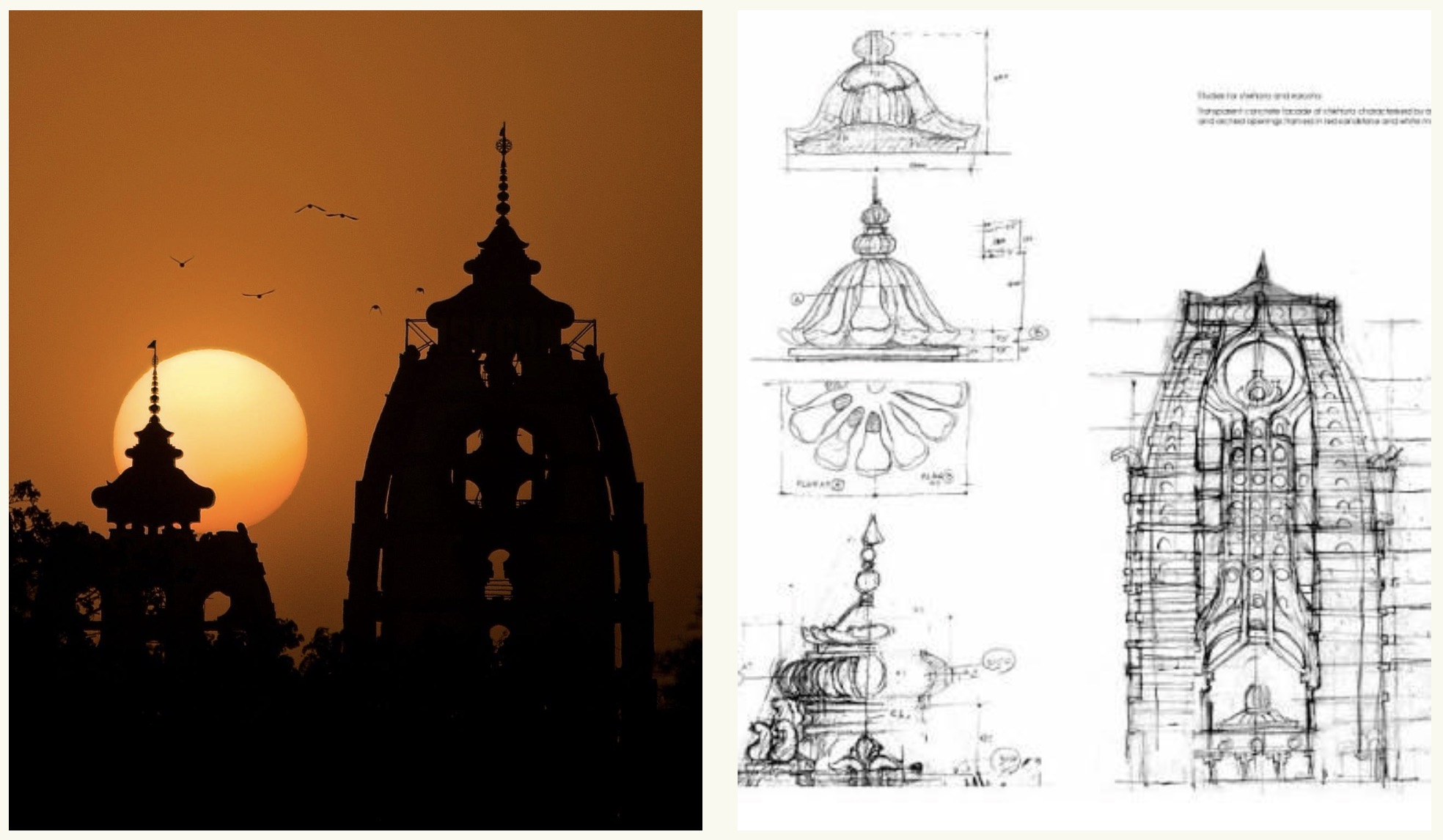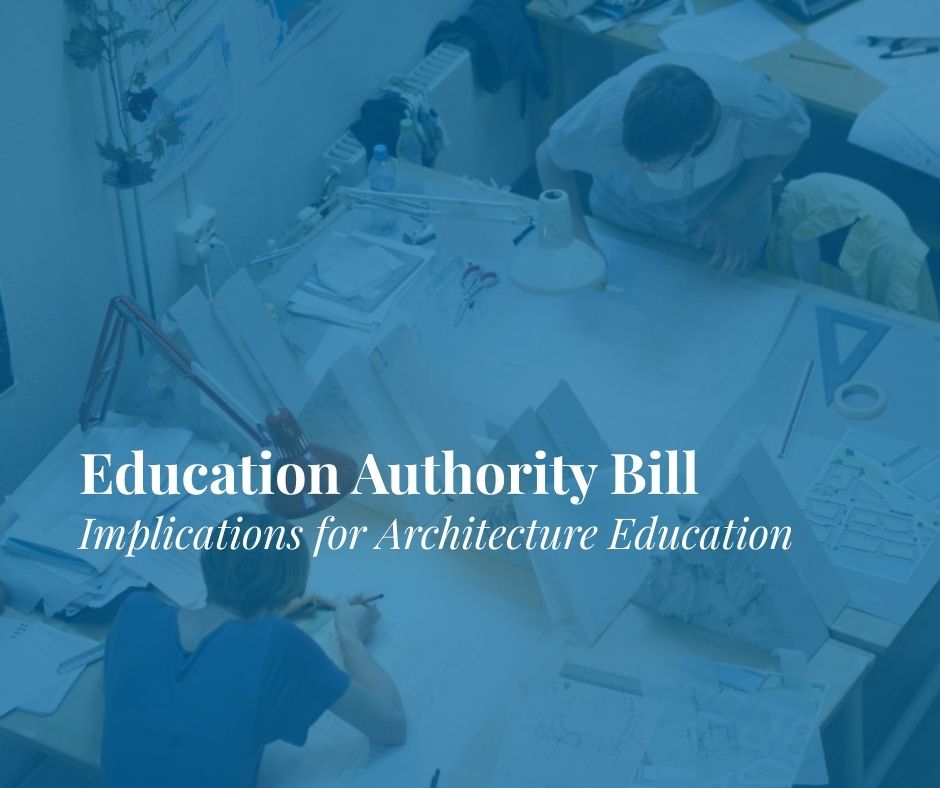In a bid to boost dwindling admissions in architecture colleges in India and resuscitate the fading interest in the profession, the Council of Architecture India decided to lower the bar for entry into architecture education for aspiring students. This announcement came through an amendment to the admission criteria in Gazette Notification, dated July 19, 2023. The circular by the Council of Architecture read,
No candidate shall be admitted to architecture course unless she/he has passed 10+2 or equivalent examination with Physics and Mathematics as compulsory subjects along with either Chemistry or Biology or Technical Vocational subject or Computer Science or Information Technology or
Engineering Informatics Practices or Engineering Graphics or Business Studies with at least 45% marks in aggregate or passed 10+3 Diploma Examination with Mathematics as compulsory subject with at least 45% marks in aggregate.”
(Note: The above relaxation shall be valid for admission in academic session 2023-2024 only, irrespective of the year in which a candidate has passed the 10+2 or 10+3 examination.)
This move comes as a response to the grim reality that over the last three years, more than 65 architecture colleges across the country have been forced to shut down due to abysmally low enrolments, with many of them failing to reach even 30% of the approved intake for three consecutive years. The list also includes many prestigious institutions owned by the members of the Council of Architecture. We reached out to the Council of Architecture to ascertain the details of intake, the number of colleges shut down in the last few years, and reasons for their closure, but the Council of Architecture did not respond to our requests.
National Aptitude Test in Architecture (NATA)
NATA, by the Council of Architecture, is one of the qualifying aptitude tests to get into an architecture course, the other being JEE by the National Testing Agency.
Till now, the Council of Architecture has already organized three rounds of NATA with speculations that there may be one more round. NATA has witnessed a significant rise in the number of aspirants as compared to the last few years. It must also be noted that the passing percentage for the NATA entrance test was reduced to 35 from 40, again in a bid to help architecture colleges secure admissions.
While the exact reasons behind the waning interest in architecture education among prospective students remain largely unknown, some speculate that the increased emphasis on science, technology, engineering, and mathematics (STEM) fields, as well as the growing allure of other professional courses, may be diverting students away from architecture. Additionally, the relatively high awareness of the diverse career opportunities and the lack of a strong support system for aspiring architects might be contributing to the decline.
On this matter, Prof. Abhay Purohit, the President of the Council of Architecture, India, shared
“The larger goal is to keep NEP in mind and make architecture courses more inclusive and accessible. But, as in the last three years, due to the COVID Pandemic, institutes (mainly in smaller cities) witnessed a low number of admissions, it was decided to ease the criteria this year, and bring it at par with the engineering courses. This criterion may change in the coming years. Owing to the fact that the students have to go through the rigorous training over five years long period, it is essential to keep the entry open and easy to as many as possible.”
He added,
“In a developing country like India, the ideal number of architects would be in a 1:5000 ratio, and that’s how we will be able to make the profession more accessible to people. However, at this point, we are looking at a 1:10000 ratio, and we need about 1500000 (15 Lac) architects. We are hoping that this move will help revive architecture education in India.”
We reached out to some professionals and academicians for their views on this issue.
An architect from Maharashtra shared,
“The Council of Architecture must focus on maintaining the quality of education, where it seems to have miserably failed. As a result of the falling quality of architecture education, profession is suffering. Helping institutions with securing admissions should be least of its concerns.”
One of the Directors of an architecture institute appeared pessimistic about this move. They felt that this announcement may not help the colleges this year, as it has come very late. They further added,
“It will be difficult to fill more than 10000-12000 (out of about 22000) seats in India this year. Which is less than 60% of the total national intake. A significant number of architecture colleges will get fewer than 20% seats.”
While the lowering of entry barriers for architecture education is seen as a necessary measure to ensure better enrollment rates, it will also be vital for the council to maintain the quality of education and uphold its standards. Striking the right balance between accessibility and excellence will be critical in revitalizing architecture education and attracting passionate individuals to join the field.
Another academician from Mumbai shared concerns about the quality of education:
The problem is that our course is not strong enough and we do not know what exactly our role in value creation is. We should be preparing students to become experts on space, but we don’t do that. Hence, we are easily replaceable by engineers and other professionals. Secondly, the salaries of graduates are low and are not expected to rise in the near future.
Tarun Walecha, a Delhi-based architect shared,
In times when the quality of architecture practised in India is being questioned, students graduating from the colleges are disillusioned about prospects and organizations are dissatisfied with their acquired academic knowledge, CoA has a vital role to play in strengthening the education system and uplifting the standards at par with international norms. It is unfortunate that CoA instead chose to lower the guard which will further add to the depletion of architectural education.
It remains to be seen if the CoA’s decision to lower the bar for entry to architecture education will really help architecture colleges secure more admissions.
This question is important because it raises the issue of whether lowering the bar will actually lead to more students enrolling in architecture programs. There is no guarantee that this will be the case, as many other factors could also influence student enrolment decisions. However, one can hope that this step will make architecture education more accessible to a wider range of students, which could ultimately lead to an increase in enrolment numbers.









12 Responses
Encroachment by others in the field of Architecture profession is the main reason for aspirants losing interest in Architecture. Unemployment and poor salaries are making it more unattractive.
Visit Ashok Dilliwala Show on YouTube and watch the videos where many such issues have been discussed.
Everyone can practice this profession. You need not to be a qualified architect i.e. B.Arch for this.This profession is also suffering bCZ Our *Act*is not protected.All are practising it , be it 10th pass, 10+2, Engineers,Builders, Diploma,ITI people……etc etc. Profession is not Regulated at all.Graduate pass out salaries are less than Masons ( illiterate) of buildings.
This profession needs some Power not *Billas*.
Awareness to students from 10th grade to be implemented by all Architects professionals bodies, so that they can choose this as a career by all interested people.Still we are less in ration to the population and no common public know the advantages of appointing an Architect for any segment of projects. Both these to be continuously and religious to be done to uplift admissions to institutes and practices Architects to get more engaged in all sectors of projects, right frim government to individual levels. There are lot of gaps at all levels to empowering this profession.
—–
Ar.Kanaka Nageswara Rao Arerapu,
+91 9866619639
kanaka.a@samyog.org
ar.kanaka.n.rao@gmail.com
CoA objective is to keep the quality upgradation of profession, closure of the institution is not at all CoA concern
Restructure the syllabus, keeping in view the changed scenarios, reduce span of the cource
Aptitude test shall be assuring quality improvement of profession through future aspirants, for want of admission and protection of the institutions CoA shall never work , degrading in any form the process NATA qualification. Don’t play with future of aspirants, by reducing qualifying marks
No amout of theories and profeessional practise is going to help, not visit to sites but also practical veiwing of work done, ratios used for bk work, plastering, concreting,, unless this is done, not engineers even maistries will overtake us complaing to owners that architects know only drawing and practicals they are zero, This is most essential for new architects who starts practising, not for high end architects.
The information needed for construction is well known by a Mason than a graduate of Architect.. The subject in architecture is all general.. there is no specialization.. in fact Architects consult other specialist for plumbing, air conditioning, electrical engineer, structural engineer, carpenter, what not.. this can be done by anybody. Why you need architectural degree? Sometimes common man has better understanding of the building rather so called architect with nonsensical concept, unwanted structure to enhance building design, waste of material, and building cost. Most of the time unscientific..
that is the mistake of the institute in which they studied . I am an architect passed out from TKMCE kollam. I have a thorough knowledge including the construction
All the fraternity will suffer from all of the above scenarios just because of the low quality education provided in most of the schools of Architecture. Nowadays CoA is aggressive about First class in graduation of teachers rather than the actual experience in architecture. I feel most of the architects have less on-field practical experience. Hence we get the comments as above. CoA should implement the 2 teacher strategy for the studios. For studio subject 2 teachers should be appointed one should be so called First class bearer and other should be with 10 years experienced teacher who might just have pass class for the graduation. Importance or weightage of the internal marks given to students may be 70-30% (70 for regular First class bearer teacher). This thing will help to reduce most of the problems autimatically.
Toomey college is the cause….is there demand of
so many architects. ?…council is the culprit..
In my opinion , it’s not the quantity of architects but the quality of the Architects matters !
If the society feels the importance of the Architects in the process of growth and the parents feel the prospects of their children in the field of architecture , automatically more students shall line up for these colleges . For that, COA doesn’t need to reduce the bar and request the parents to join their wards into architecture .
In comparison, an Engineering student who completes his degree in 4 years and getting selected in a campus interview for a minimum salary of Rs 6,00,000 package per annum and an architecture student studying for 5 long years spending his days and nights in endless submissions is left out without any campus interviews , speaks a volume about how attractive our architecture course is !!!
Even if he gets a job after roaming an endless architects offices also , his maximum salary would be not more than Rs 3,00,000 per annum !!!!
When such a disparity is there in these two fields, why would one choose to suffer and join the course of architecture ???
COA should concentrate more on these matters and find solutions in a more practical way, so that the parents feel more secure of their wards future on joining the architecture course , rather than reducing the bar to join more students into the colleges and make more people suffer !!!
Please correct your facts. India’s population is about 150 crores. 1 in 10000 ratio shall lead to about 1.5 lac architects and not 15 lacs. There are already about 1 lac registered architects. There is in fact more supply than demand keeping in consideration the fact that there are more than 25000 architects that pass out every year in India.
If architects were paid their fair share and backed by the architecture community, we would not have to do this. The main reason for the dwindling of admissions is word of mouth, that architects don’t get paid enough as compared to their counterparts, who have seemingly lesser liabilities and work hours.